Carnaby Street, nestled in the heart of London’s vibrant Soho district, is globally renowned as the epicenter of the Swinging Sixties. For enthusiasts of London’s ever-evolving landscape, the allure of comparing historical landmarks with their modern counterparts holds a special fascination. There’s a unique charm in pinpointing the exact vantage points of vintage photographs and recreating those scenes in today’s world, offering a tangible connection to the past.
This exploration delves into Carnaby Street, a thoroughfare that not only captured the spirit of the “Swinging Sixties” but also boasts a rich and intriguing history stretching back centuries.
 Carnaby Street Then and Now View
Carnaby Street Then and Now View
 Carnaby Street Today Modern View
Carnaby Street Today Modern View
Long before its reign as a fashion mecca, the land on which Carnaby Street now stands had a far different purpose. A windmill once dominated the landscape, a far cry from the stylish boutiques and bustling crowds that characterize the street today.
 Carnaby Street Historical Windmill Location
Carnaby Street Historical Windmill Location
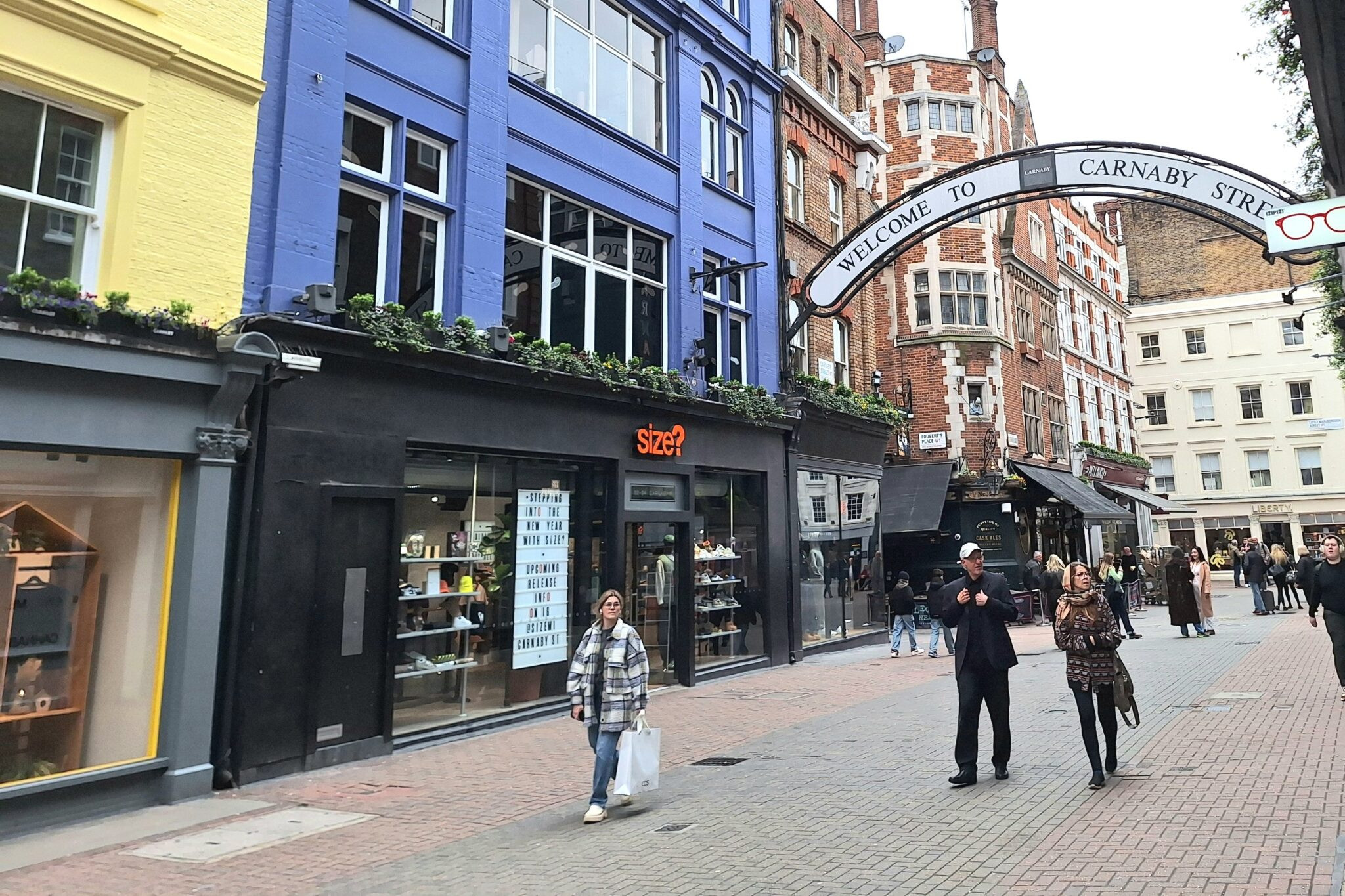 Carnaby Street Area Today Buildings
Carnaby Street Area Today Buildings
Furthermore, the area surrounding present-day Carnaby Street served as the location for “Pest Houses.” During the devastating Great Plague of the 1660s, these houses provided care for the afflicted, becoming places of both treatment and, tragically, mass burial grounds.
The formal layout of Carnaby Street as we recognize it today took shape in 1682, thanks to the efforts of Richard Tyler, a local bricklayer. The street’s name is derived from Karnaby House, the first structure erected on this newly formed London street.
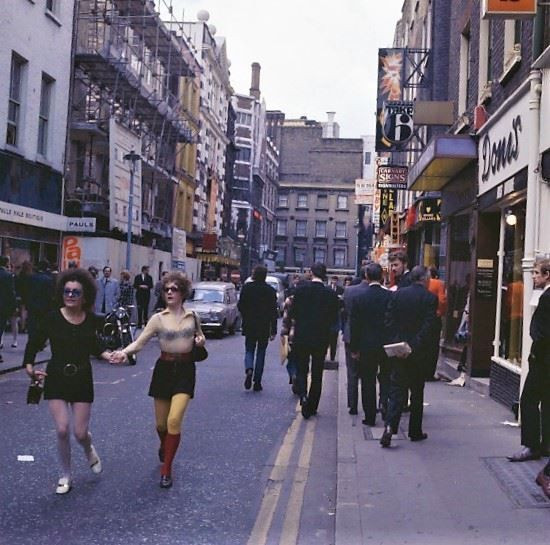 Carnaby Street 17th Century Layout Map
Carnaby Street 17th Century Layout Map
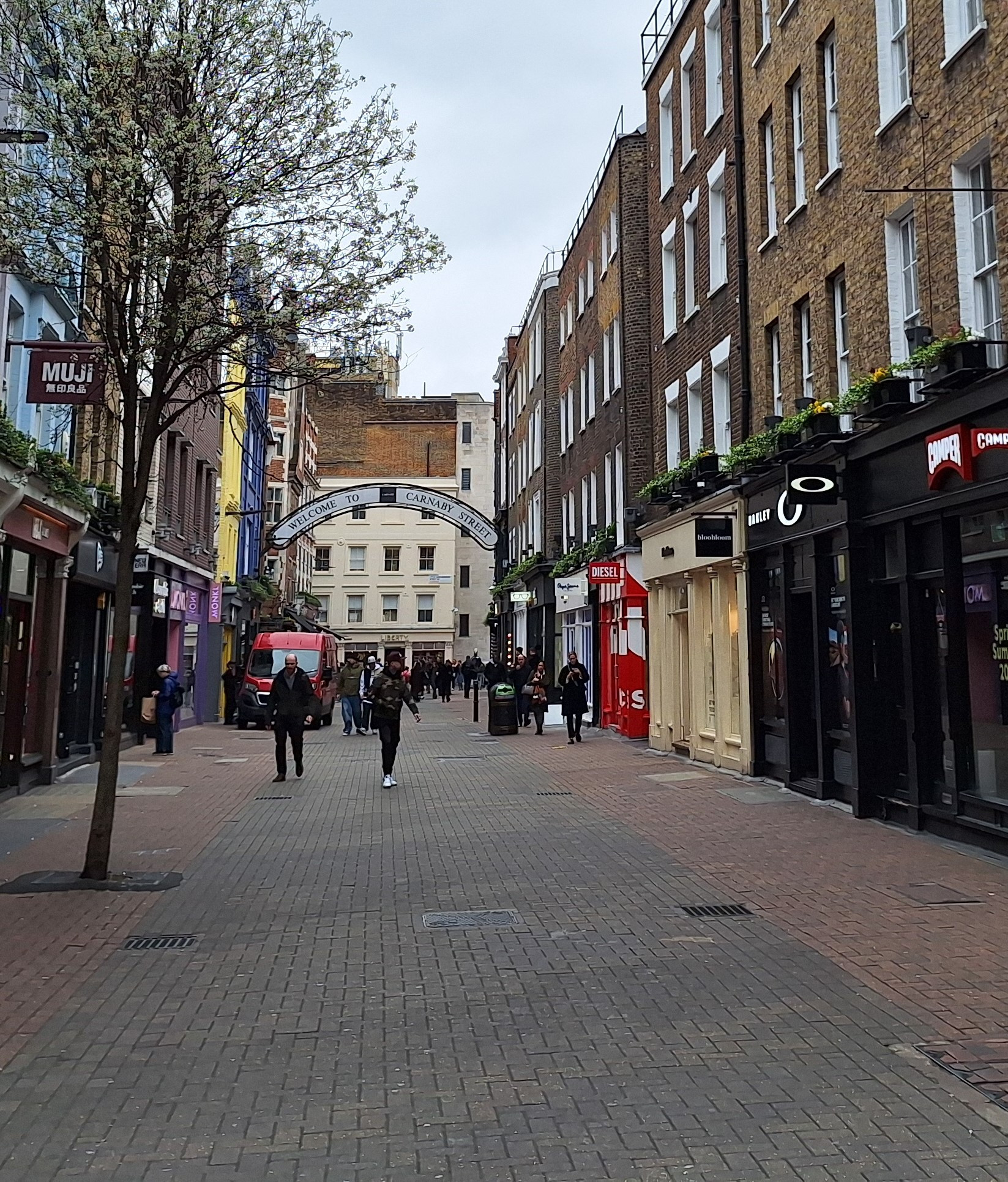 Carnaby Street Signage Modern Day
Carnaby Street Signage Modern Day
Adding to its historical tapestry, the Shakespeare’s Head pub, situated midway down Carnaby Street, once belonged to descendants of the legendary playwright William Shakespeare, offering a literary connection to this iconic London locale. Intriguingly, the late 1700s saw Carnaby Street become a pioneering location for female entrepreneurs, as it hosted some of London’s first female butchers.
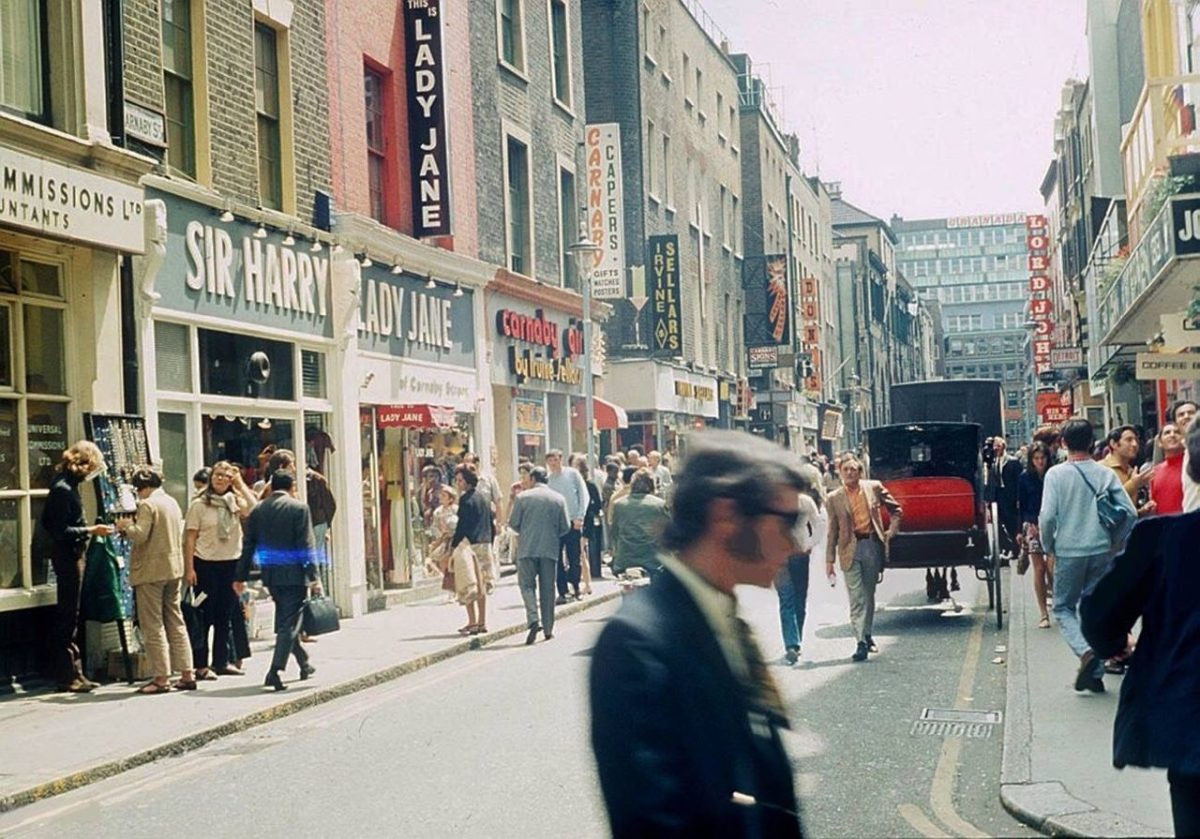 Carnaby Street 1960s Fashion Scene
Carnaby Street 1960s Fashion Scene
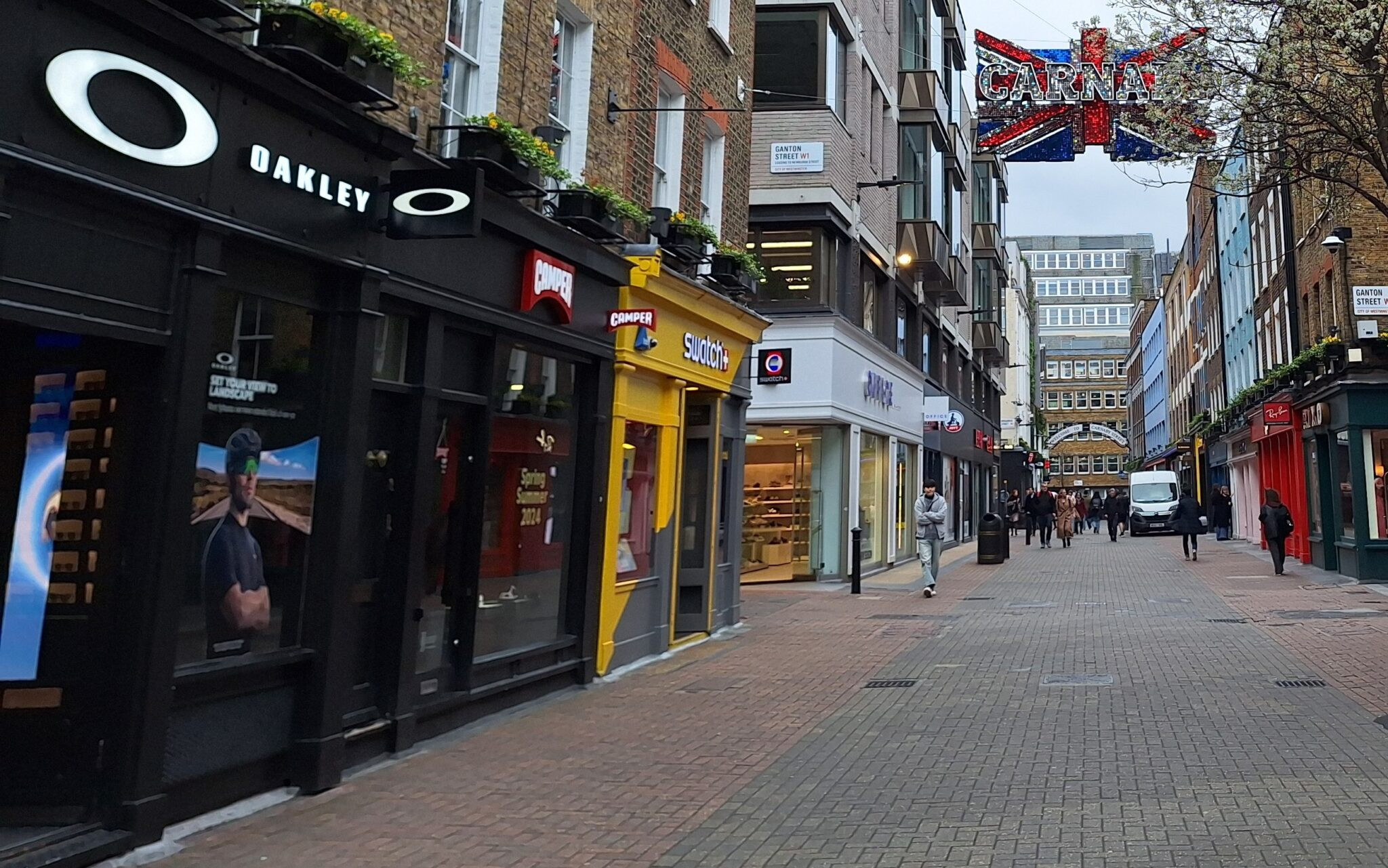 Carnaby Street Contemporary Shoppers
Carnaby Street Contemporary Shoppers
In 1961, Carnaby Street marked another milestone by opening London’s first vegetarian restaurant, reflecting the evolving social and dietary trends of the era. However, it was the late 1950s that truly set Carnaby Street on its path to becoming the “Birthplace of the Swinging Sixties.” The opening of “His Clothes” in 1957, a men’s fashion boutique, signaled the street’s burgeoning role in the fashion world.
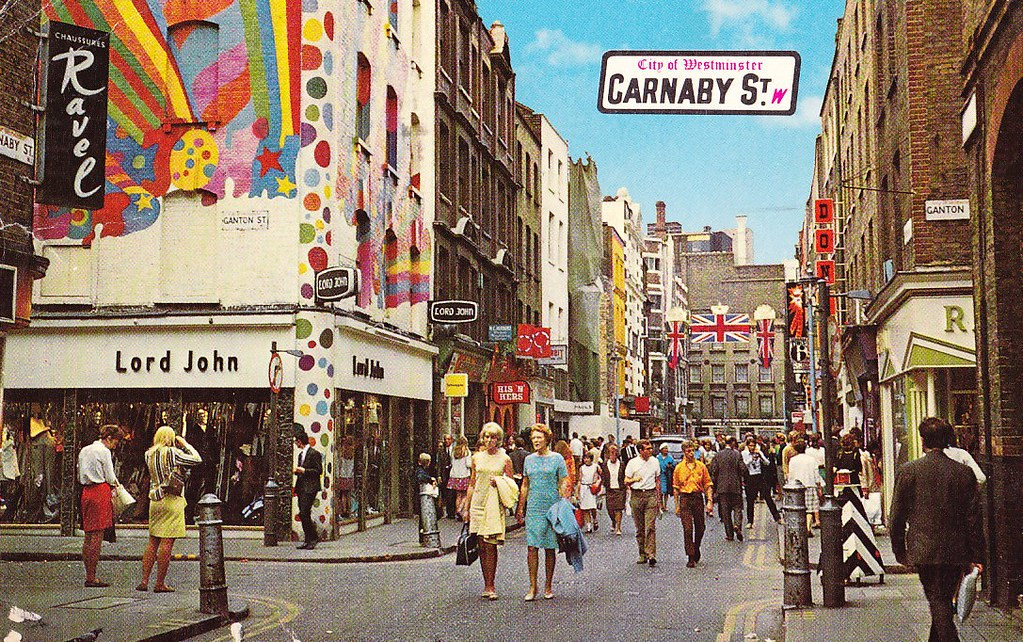 His Clothes Shop Carnaby Street Vintage
His Clothes Shop Carnaby Street Vintage
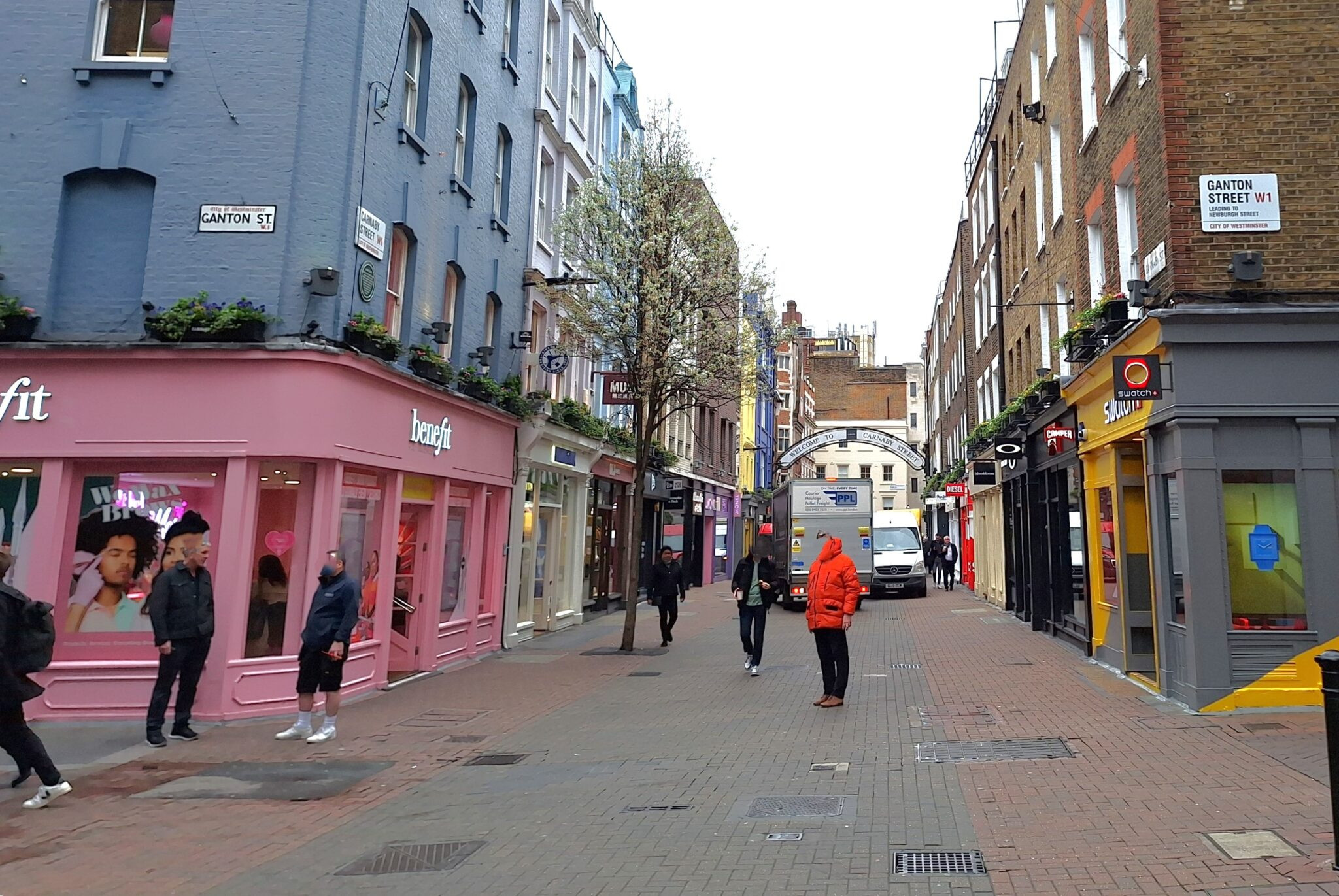 Carnaby Street Modern Retail Facade
Carnaby Street Modern Retail Facade
As the Sixties unfolded, music and fashion became dominant cultural forces, and Carnaby Street, this unassuming Soho backstreet, found itself at the heart of this cultural revolution. It became synonymous with everything “happening,” exerting a significant influence on youth culture worldwide.
By the mid-Sixties, pioneering independent fashion designers such as Mary Quant and Irvine Sellars established themselves on Carnaby Street. These visionaries revolutionized fashion with bold designs, vibrant colors, and daring styles like the miniskirt, contributing to what the media dubbed the “permissive society.”
 Carnaby Street 1960s Fashion Display
Carnaby Street 1960s Fashion Display
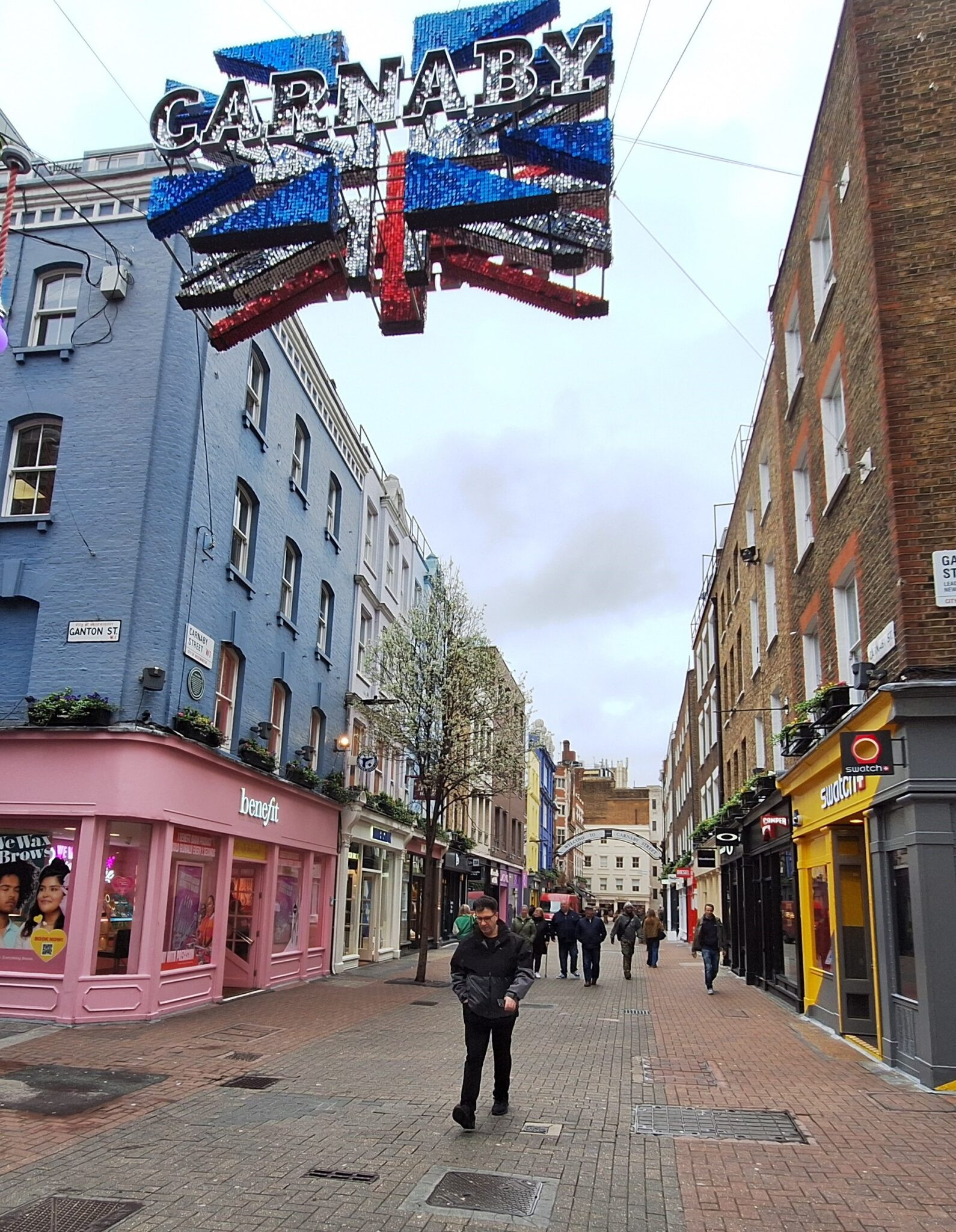 Carnaby Street Today Fashion Boutique
Carnaby Street Today Fashion Boutique
Iconic boutiques like “Lady Jane,” “Lord John,” “Kleptomania,” “I was Lord Kitchener’s Valet,” “Ravels,” and “Take Six” became Carnaby Street staples. Renowned bands of the era frequented these shops to outfit themselves in the latest styles, and fashion-conscious shoppers from across the globe flocked to Carnaby Street to experience its unique energy.
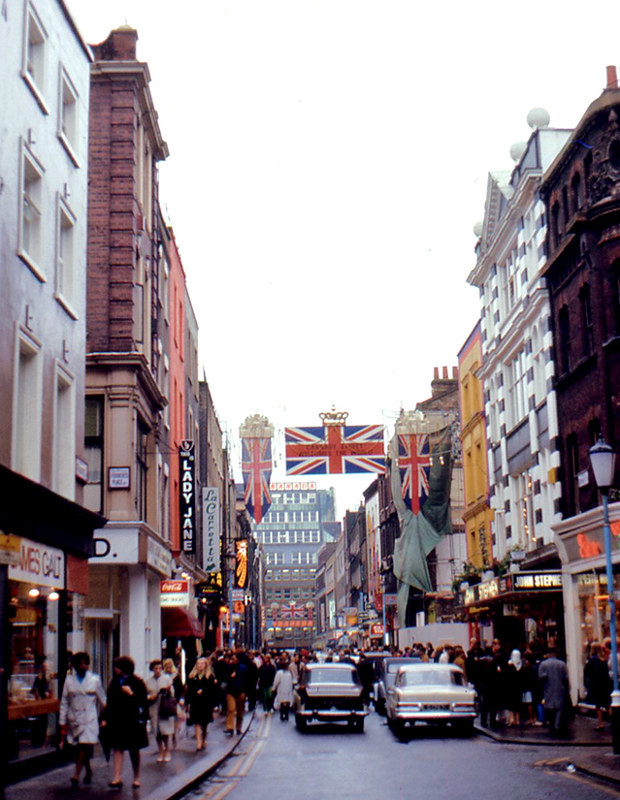 Carnaby Street 1960s Shoppers Crowds
Carnaby Street 1960s Shoppers Crowds
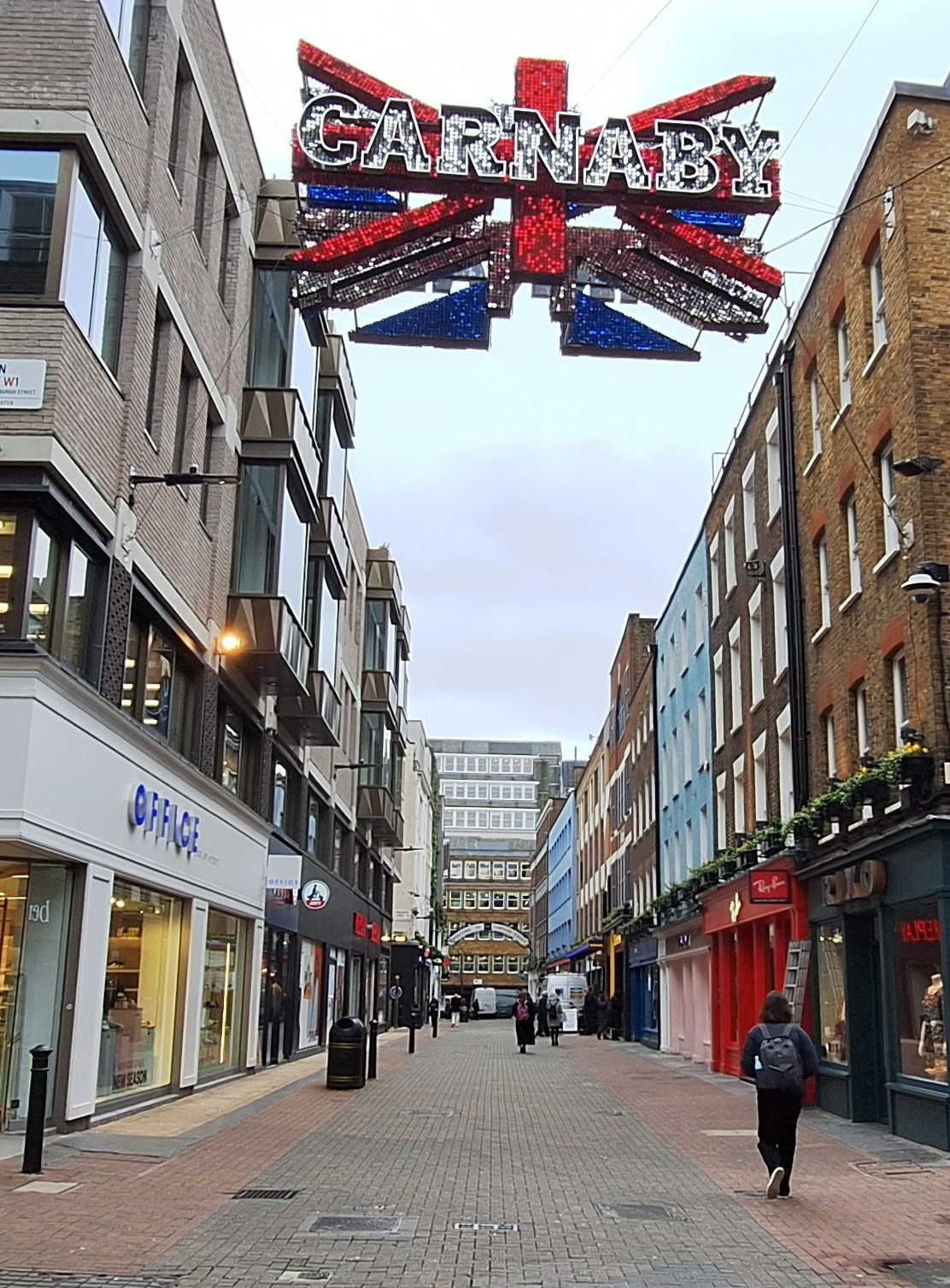 Carnaby Street Pedestrian Zone Present
Carnaby Street Pedestrian Zone Present
Another significant transformation occurred in 1973 when Carnaby Street was fully pedestrianized. This pivotal change created a vehicle-free haven, allowing shoppers to leisurely explore the boutiques and stroll down the street without traffic concerns. Pedestrianization resulted in an impressive 30% surge in visitor numbers, further cementing Carnaby Street as a premier destination.
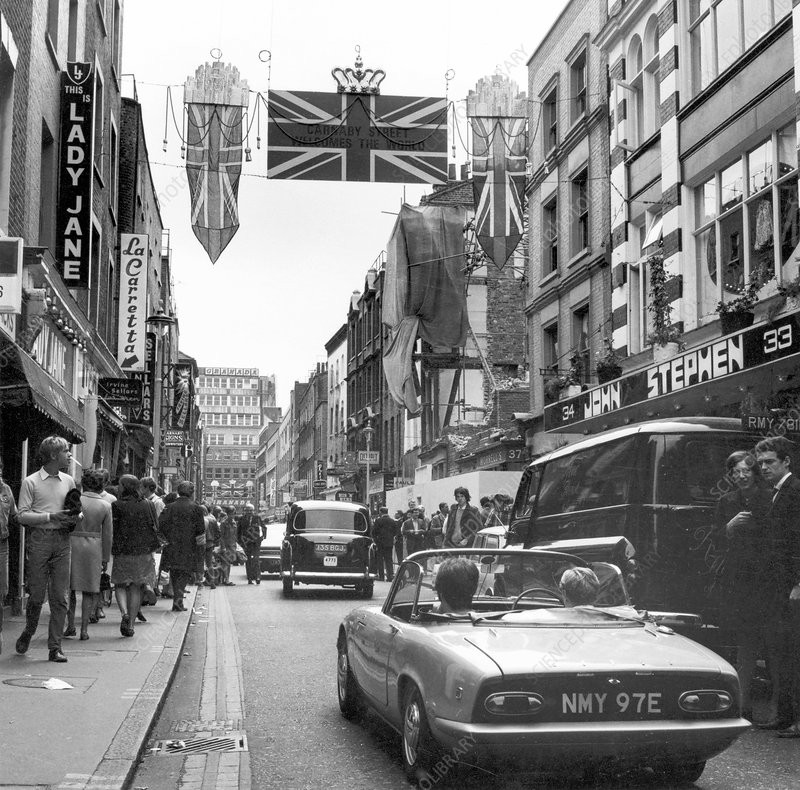 Carnaby Street Shoppers 1968 Pedestrianisation
Carnaby Street Shoppers 1968 Pedestrianisation
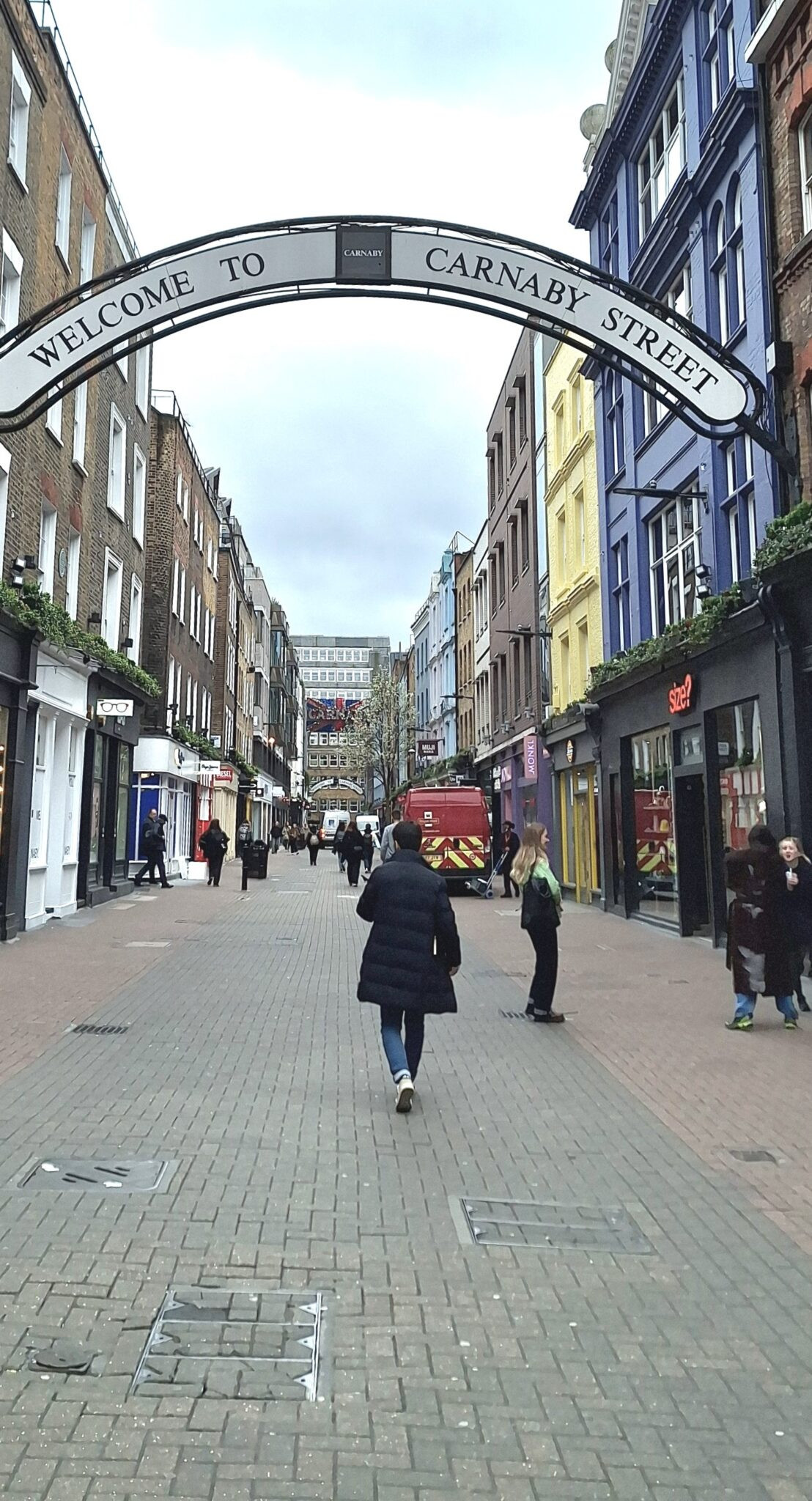 Carnaby Street Outdoor Dining Today
Carnaby Street Outdoor Dining Today
In recent decades, Carnaby Street has witnessed a gradual shift from independent fashion retailers towards more tourist-oriented and novelty shops. Despite this evolution, Carnaby Street retains its vibrancy, particularly during the Christmas season when its spectacular Christmas lights displays rival those of Oxford Street and Regent Street, albeit on a smaller scale, drawing thousands of visitors.
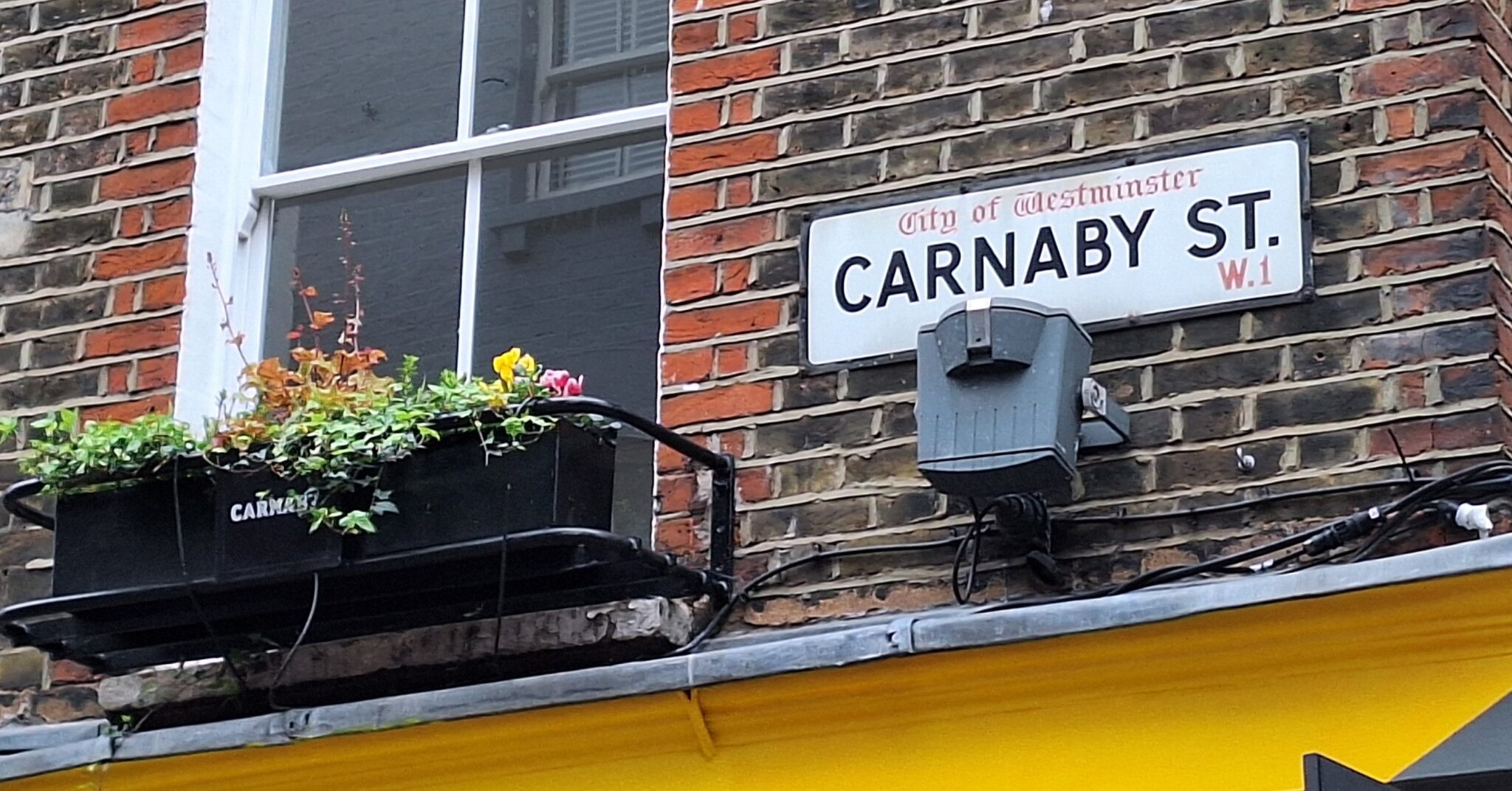 Carnaby Street Christmas Lights Display Modern
Carnaby Street Christmas Lights Display Modern
Numerous iconic photographs capture Carnaby Street, especially during its “Swinging Sixties” heyday. Recreating these “then and now” perspectives offers a fascinating glimpse into the street’s transformation over time. While precise replication is challenging due to urban changes, the effort provides a unique way to appreciate the enduring legacy of Carnaby Street. Exploring Carnaby Street today is a journey through time, where echoes of the Swinging Sixties resonate amidst the contemporary bustle, making it a must-visit destination in London.
